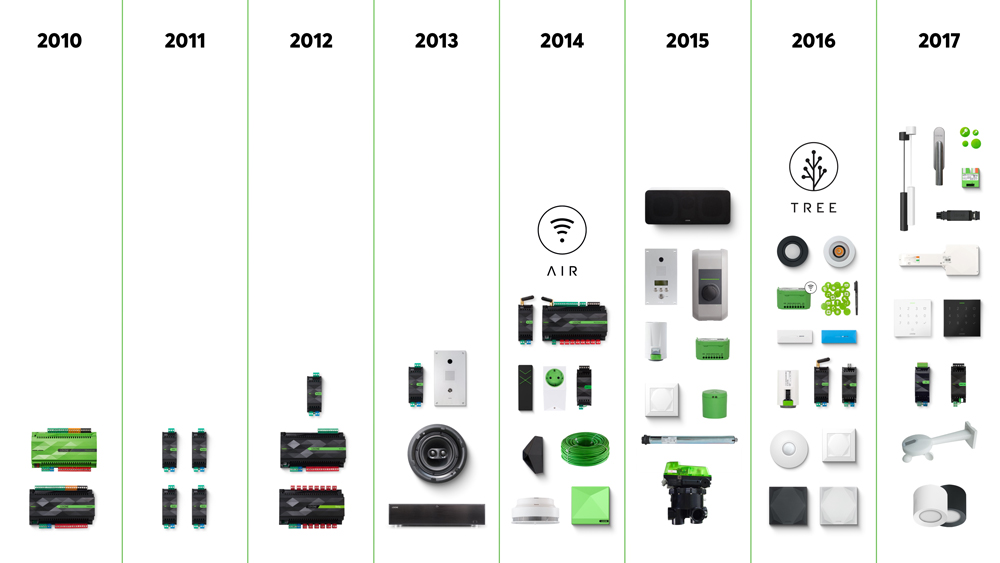
How home automation is changing the way we live: A look at the future of homes
Let’s start by defining what automation is not.
It’s easy to think that turning on a light or adjusting the thermostat with an app or voice control is automation. But these products are often connected to smartphones and the cloud, which means we still have to manually control them. This is just an overload of manual control, and it gets in the way of what technology can really do.
Real automation happens behind the scenes, without us having to lift a finger.
For example, a smart thermostat can automatically adjust the temperature based on our schedule and preferences. Or a smart security system can automatically arm itself when we leave the house and disarm itself when we come home. This is the true potential of automation: to make our lives easier and more efficient without us having to think about it.
Realizing the future of home automation.
Home automation is when technology becomes so seamless that it blends into the background. We can simplify this concept by understanding how a home can be controlled by technology to think for itself, based on reliable standards and without the need for coding.
Beyond app and voice control, truly automated functions will work based on factors such as presence, temperature, environment, customized settings, and more. This is cloud-free and secure, and it is the future of home automation, happening now.
As you consider these levels of home evolution, think about your current offerings. What is the next step for you? What will it take to get there?
Here are some specific questions to consider:
- What smart devices do you currently have in your home?
- How are you currently using these devices?
- What do you want to be able to automate in your home?
- What are the challenges you face in automating your home?
- What resources do you need to achieve your home automation goals?

Level 0:
Traditional Home
A traditional home is one with conventional electrical wiring and basic technology. This means that energy and money are often wasted, and residents have to manually turn off lights, music, and other devices every time they leave a room or the house.
- Traditional lighting: Lights are controlled by switches, not by smart devices.
- Basic heating/cooling: Temperature is controlled manually, not by a smart thermostat.
- Disconnected devices: Devices are not connected to each other or to a central hub, so they cannot be controlled together.
This level of home automation is the most basic, and it offers the fewest benefits. However, it is a good starting point for those who want to get started with home automation without making a big investment.
Smart Home 1.0:
Control Systems
In Smart Home 1.0, devices are connected to each other, but they require complicated layers of control to work together. This can be done through AV and control systems, which often use complicated remotes and labeled switches.
Many people believe that automation is achieved at this level, but this is not yet the case. True automation happens behind the scenes, without us having to manually control devices.
Smart Home 2.0:
Smart Devices
In Smart Home 2.0, devices are connected to the internet and can be controlled independently. This is a step up from Smart Home 1.0, but it still has some drawbacks.
One problem with Smart Home 2.0 is that it can lead to overuse of apps and voice control. This can be inconvenient and frustrating, especially if you have to use multiple apps to control different devices.
Another problem is that Smart Home 2.0 can be overwhelming. With so many different devices and apps to manage, it can be difficult to keep track of everything.
Future of Home
Automation:
A Loxone smart home is a truly automated home. Devices communicate with each other and work together on their own, based on your specific preferences and settings.
- Fewer switches, simplified control: You can control everything in your home with a single app, or even with voice control.
- Zoned HVAC, multiroom audio: You can set different temperatures and music playlists in different zones of your home.
- Wellness-driven lighting: Your lights can be automatically adjusted to create a relaxing and comfortable atmosphere.
- Energy-saving controls: Your home can be automatically programmed to save energy.
- All systems in one app: You can control all of your smart home devices from a single app, making it easy to manage your home.
Loxone’s solutions for the future of homes
Loxone offers a wide range of products that can be used to automate your home. These products work together to create a truly integrated system that can control everything from your lighting and security to your heating, shading, and access control.
All of Loxone’s products can be customized and monitored in the Loxone App. This app gives you complete control over your home, even when you’re away.


Are you ready to take the leap into the future of home automation?
Now that you know what the future holds, let’s talk about some common concerns that people have about taking the plunge.
One concern is the time and money involved. It can be daunting to think about researching, buying, and installing a smart home system. And it’s not cheap.
Another concern is complexity. With so many different smart devices on the market, it can be difficult to know where to start and how to make them all work together.
I don't have the time or resources to learn a new system from scratch.
- Every dealer BEFORE Loxone
Are you sure you're solving the right problem?
By saving time on programming, I was able to quote more projects to customers and offer more solutions and services, which led to increased profits
- Every dealer AFTER Loxone




